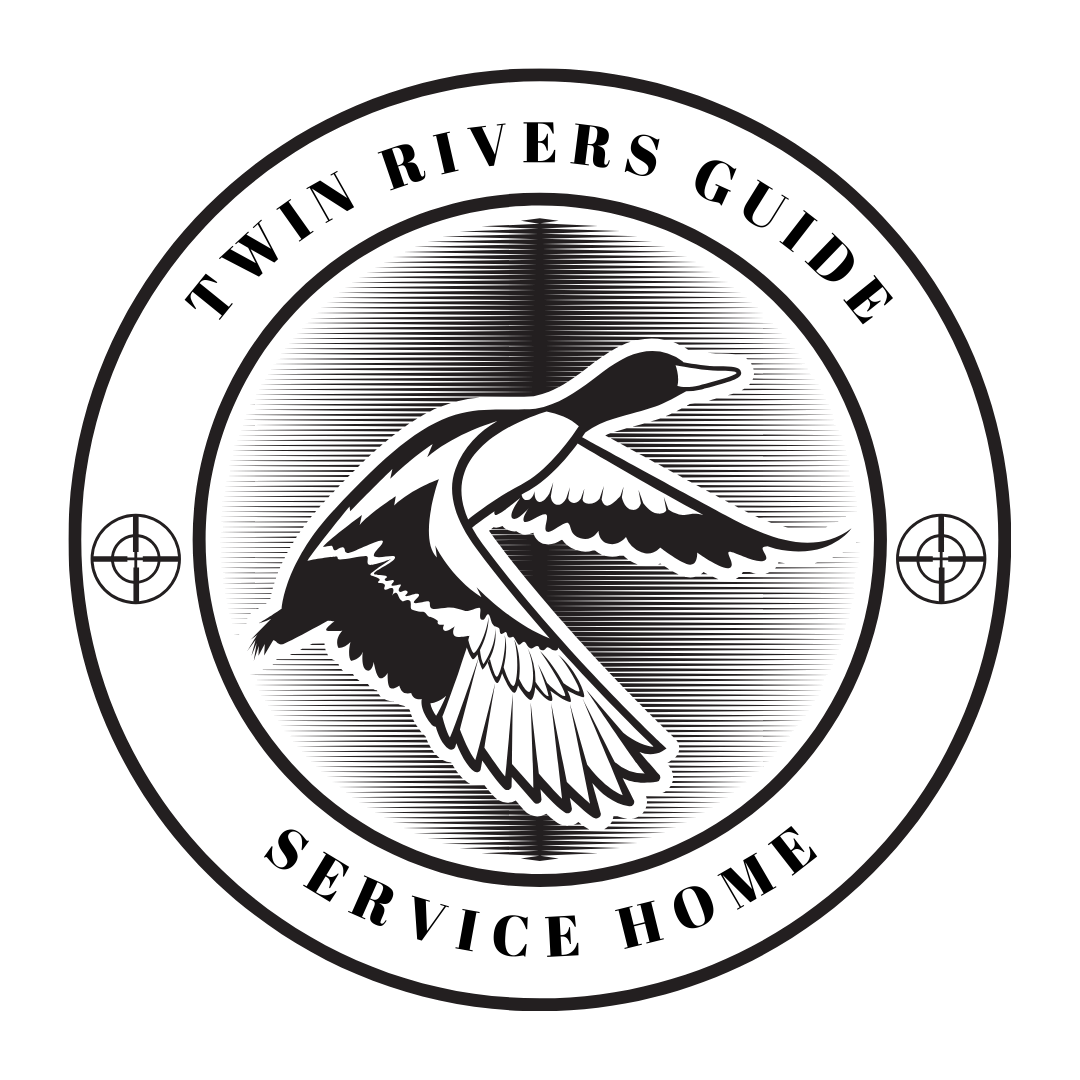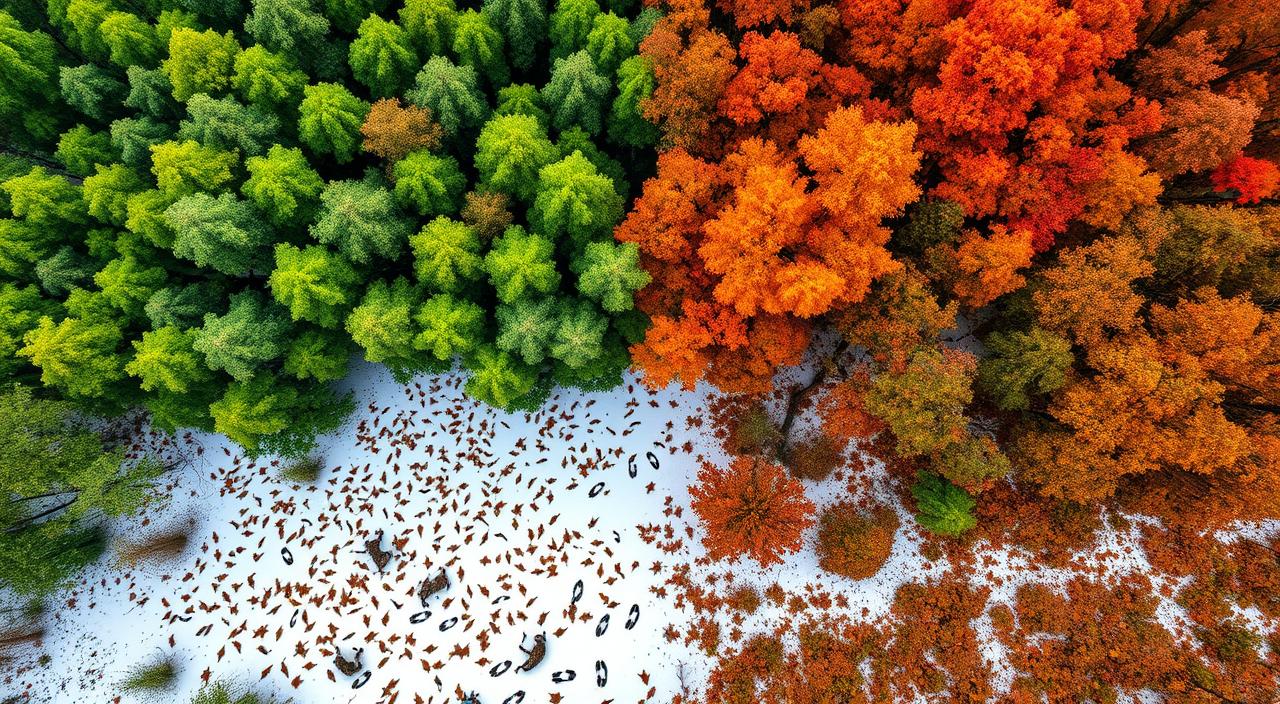The top deer hunters spend a lot of time in the woods. Opening day is special, with cool, damp air. It’s a mix of summer and autumn’s last days.
In early deer season, deer are most active. Bucks start to claim their territory. All deer look for food to get ready for winter. Scouting before the season ends is key to success. It helps hunters find the best spots for deer to rest.
Key Takeaways
- Scouting and analyzing the topography before the season can help identify potential bedding areas for deer.
- The pre-rut activities of early deer season are the most predictable, as bucks are beginning to separate and claim home ranges.
- Deer are focusing on finding protein sources to prepare for the winter months during the early season.
- Planning a hunting trip to coincide with the last Red Moon of October or the first part of November can increase the chances of encountering a big buck moving during daylight.
- The statistical success rate of hunting big bucks during the Red Moon period may be higher compared to other times of the year.
Knowing when to hunt is crucial. By understanding the best times, you can improve your hunting. This increases your chances of a successful hunt.
Understanding Deer Behavior During the Early Season
As hunting season gets closer, knowing deer behavior is key, especially in the early season. Bucks and does are not yet focused on mating. Instead, they’re all about gaining weight for winter. This makes finding food a top priority for hunters.
Scouting Before the Season Begins
Scouting before the season is vital. Look for white oak acorns and fruit trees like persimmons and apples. These attract deer from far away. By studying the area’s layout and looking for signs, hunters can find the best spots for their stands.
Focusing on Food Sources
In the early season, deer focus on food sources to get ready for winter. Pay attention to crops, green forage, and high-protein foods. Use trail cameras at feeding and water spots to track deer movements and find the best hunting areas.
“Big bucks tend to feed closer to their bedding areas to minimize exposure time. Preferred bedding areas for big bucks often include thick, difficult-to-walk-through areas close to utilized food sources.”
By understanding deer behavior and scouting early, hunters can boost their chances of success. This sets them up for a successful and enjoyable hunt.
Identifying Mast Crop Patterns
As the early hunting season gets closer, it’s key for hunters to find the most abundant mast crop. White oak acorns are a big draw for deer, as they travel far for this food. Learning to spot white oak trees early gives hunters a big edge.
Recognizing White Oak Trees
Carrying binoculars helps hunters spot nuts on white oak trees early. These trees have rounded, lobed leaves, unlike red oak’s pointed leaves. White oak bark is also lighter and scaly as the tree grows older.
Locating Fruit Trees and Persimmons
Fruit trees like persimmons and apples are also deer magnets. They eat these fruits until they’re gone. These trees often grow near old homes, where farmers kept them.
By focusing on the most abundant mast crops and knowing how to spot white oak and fruit trees, hunters can do better in the early season.
“Up to 28% of a deer’s diet during the fall is composed of hard mast, mainly acorns (MSU Deer Lab).”
Setting Up for Ideal Hunting Times
Timing is key in deer hunting. Knowing when deer move and where to set up your stand can greatly improve your chances. Let’s look at how to place your morning and evening stands for the best results.
Positioning Morning and Evening Stands
For morning hunts, place your stand on trails away from where deer eat. Deer often stop for a quick snack before going to bed. By setting up on these trails, you’re more likely to catch deer as they leave their feeding spots.
In the evenings, set up near where deer eat. Deer gather here as they get ready for a night of foraging. This gives you a chance to catch them as they start their evening meal.
Always think about the wind when setting up your stand. Wind direction is important to keep your scent from blowing towards deer. This can scare them away and spoil your hunt.
| Metric | Morning Hunts | Evening Hunts |
|---|---|---|
| Average Time | 30-45 minutes before first light | 30 minutes to 1 hour before sunset |
| Success Rates | Roughly 50/50 with evening hunts | Roughly 50/50 with morning hunts |
| Key Strategies | Set up on trails leading away from feeding areas | Set up near prime feeding locations |
By carefully placing your stands and understanding deer movement, you’ll increase your hunting success. This is especially true during the best times of day.
Tracking Deer Movement Patterns
Knowing deer movement patterns is key for hunting success. Deer move differently based on their habitat and the season. Hunters can find the best spots by watching these patterns.
In areas with lots of farms, deer stay close, within 200 yards. In places with farms and forests, they move up to 600 yards. In the wild, they can go a half mile to a mile. This knowledge helps hunters set up better.
| Habitat Type | Typical Deer Movement Range |
|---|---|
| High % Ag Locations | 200 yards or less |
| Mixed Ag Regions | 400 to 600 yards |
| Wilderness Settings | 1/2 mile to 1 mile |
Deer like to bed in areas with trees, grasses, and shrubs. These spots offer cover and food. By Tracking Deer, hunters can find these areas and set up stands.
Old bucks are careful and change their paths to avoid hunters. Hunters can set up stands on the backside of their path in the morning. Or, they can hunt where deer go to eat in the afternoon.
“Recognizing and creating efficient deer movement patterns can lead to significant improvements in herd, habitat, and hunting success.”
By understanding and using Deer Movement Patterns, hunters can see more deer. This can make their hunting trips more successful.
Ideal Hunting Times
Early hunting season is all about knowing how weather affects deer. As summer fades, hunters need to change their plans. This is because the environment is changing.
Adapting to Weather Changes
When it gets cooler, deer move more during the day. They look for places to relax. Hunters should move their stands to match these changes.
Dry weather makes water even more important. Deer need water, so hunters can use this to their advantage.
Utilizing Water Sources
By putting stands near water, hunters can find deer. Water spots are busy, especially when it’s hot. Watching for deer signs near water can help hunters understand their habits.
Success in early hunting depends on adapting to weather and finding water. By being alert and flexible, hunters can improve their chances of a good hunt.
“The key to successful early-season hunting is being adaptable. Deer behavior is heavily influenced by changes in weather, and hunters need to be able to quickly pivot their strategies to capitalize on these shifting patterns.”
Scouting Beyond Opening Day
As the hunting season goes on, it’s key to keep up with your scouting. Deer change their food choices and paths due to the environment. Continuous scouting helps you stay ahead and improve your hunting.
Adjusting to Changing Food Preferences
What deer liked to eat last year might not be the same this year. Deer picky eaters and their tastes can change. Watch how they use different foods like acorns and persimmons.
- Observe deer feeding patterns and document any changes in their preferred food sources.
- Be adaptable and adjust your hunting strategy to follow the deer as they transition between food types.
- Utilize trail cameras to gather data on deer movements and feeding habits in real-time.
By keeping an eye on changing food preferences, you can place your stands better. This makes your hunting more effective.
“Scouting should not stop at the start of the season, as deer will continuously adjust their patterns and food preferences. Hunters must remain vigilant in their scouting efforts, tracking how deer react to changes in food sources and other environmental factors throughout the early season.”
Scouting regularly, even after the season starts, gives you key insights. It helps you adjust your hunting plans to match the deer’s behavior.
Maximizing Hunting Opportunities
In the early deer season, being flexible and adaptable is key. Permanent stands can be useful, but being mobile is more important. This lets you follow deer as they move and find new food sources.
Get a good climbing stand or a lightweight hang-on. These are easy to set up when you see deer or fresh tracks. This way, you can keep up with the deer’s changing habits and hunt where it matters most.
Ladder stands and box blinds work well later in the season. But in early season, being quick and flexible is what sets you apart. By using a Hunting Opportunity Maximization approach and a Flexible Hunting Strategy, you’ll make the most of the early season’s deer activity.
“95% of Pope and Young-caliber bucks were harvested by Hank Tassitano using evening stands in the early season on open fields, especially when accessed in the afternoon.”
- Focus on hunting food sources that are currently being utilized by deer.
- Adapt your stand locations based on changing weather, moon phases, and deer behavior.
- Be prepared to quickly set up and relocate your hunting setup as needed.
By being dynamic and adaptable in your early-season hunts, you’ll increase your Hunting Opportunity. Remember, deer habits change all the time. So, staying quick and responsive is crucial for success.
Conclusion
The early deer season is full of challenges and chances for hunters. Knowing deer behavior patterns and using smart early season hunting strategies can help a lot. Scouting, adapting to the environment, and hunting at the best times are key to success.
Understanding where deer eat and move helps a lot. Setting up stands in the right places is also important. This article has given you the tools to do well in the early season.
Whether you’re new or experienced, learning about early season deer behavior is crucial. Being flexible and adaptable will make your hunting better. So, get ready, improve your skills, and enjoy the early deer season’s excitement.

